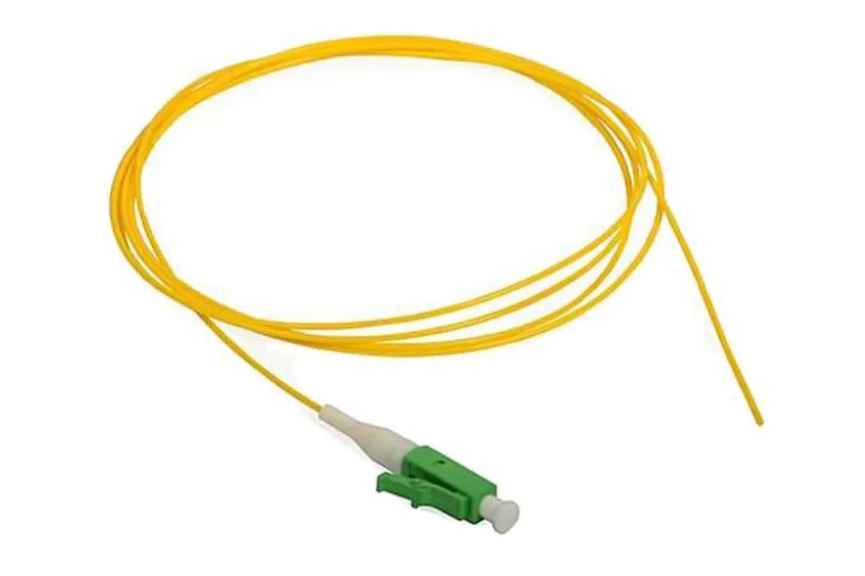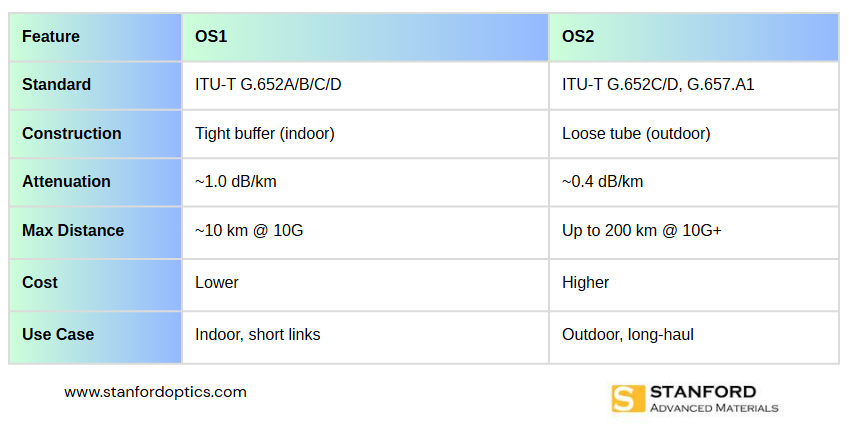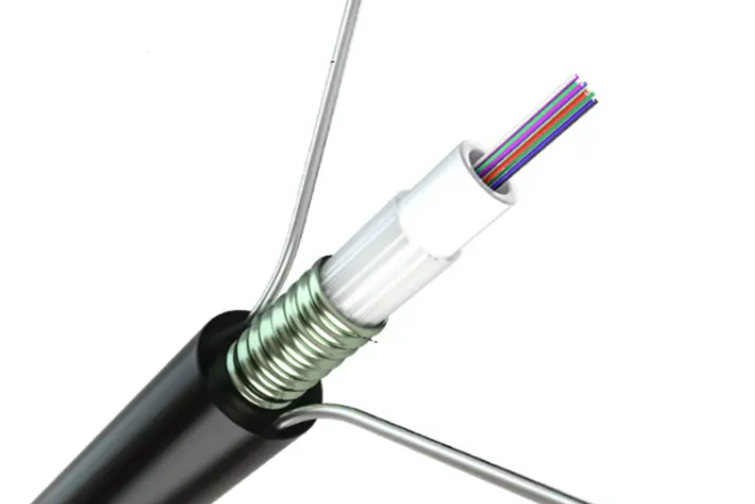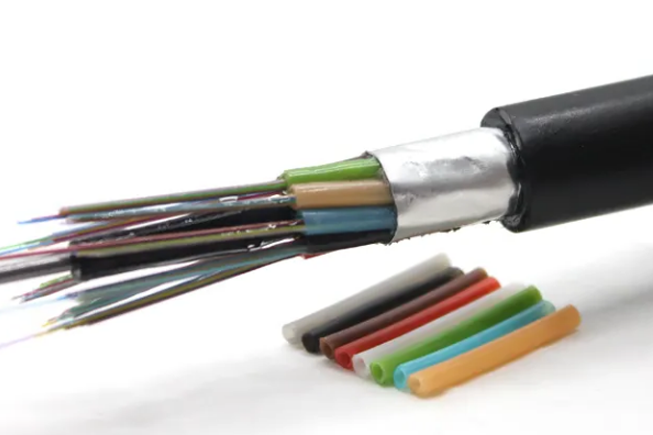
OS1 vs OS2: What's the Difference in Single Mode Fiber?
When it comes to single mode fiber, not all cables are created equal. You’ve probably come across OS1 and OS2 in product specs—or maybe you're comparing quotes from different vendors and wondering: which one do I actually need?
Let’s break it down, no fluff, just the facts (with a little personality).
What Is Single-Mode Fiber?
Single-mode fiber (SMF) is designed to carry light straight down a very thin core, typically 9 microns wide. This allows only one path, or mode, of light to travel, which keeps signal loss low and transmission quality high over long distances.

In plain terms: single mode = long haul, high speed, no drama.
SMF is typically used in:
-
Telecom networks
-
Data center interconnects
-
Metro/backbone infrastructure
-
Campus networks
Within single mode, there are two main types: OS1 and OS2. Both do the same job—getting data from A to B—but the way they’re built (and where they shine) is quite different.
OS1: The Indoor Choice
OS1 cables are built for indoor use. Think server rooms, patch panels, riser floors, and telecom closets. They use a tight-buffered construction, which means the fiber is tightly wrapped in protective material. It’s sturdy, compact, and easy to handle in buildings.
-
Standard: ITU-T G.652A/B/C/D
-
Construction: Tight buffer
-
Max Attenuation: 1.0 dB/km
-
Max Distance: ~10 km at 10 Gbps
-
Wavelengths: 1310 nm / 1550 nm
-
Use case: Internal cabling, LANs, and shorter runs
It’s cheaper, easier to terminate, and totally fine for short-to-medium distances—especially when your cable isn’t exposed to the outdoors.
OS2: The Outdoor Choice
Need to cover more ground? OS2 is your go-to. It’s optimized for long-distance, high-performance connections, like between buildings, cities, or across campuses.
OS2 cables are usually built with a loose-tube design. This protects the fiber from environmental stress (temperature changes, water, mechanical strain) and makes it suitable for outdoor or underground installation.
-
Standard: ITU-T G.652C/D (low water peak), sometimes G.657.A1
-
Construction: Loose tube
-
Max Attenuation: 0.4 dB/km
-
Max Distance: Up to 200 km with signal amplification
-
Wavelengths: 1310 nm / 1383 nm / 1550 nm
-
Use case: Metro fiber, long-haul links, FTTx, CWDM/DWDM
Sure, OS2 costs a bit more—but if you're running fiber in the wild, it’s worth every penny.
OS1 vs OS2: The Quick Comparison

So… Which One Should You Choose?
Good question. It depends on where and how far you’re running the cable.
-
If your fiber stays inside, in a protected environment with relatively short distances, go with OS1. It’s cost-effective and totally capable.
-
If your fiber is heading outside (across a campus, to another building, or across town), choose OS2. It’ll give you more distance, lower loss, and better long-term performance.
Oh, and one important heads-up: OS1 and OS2 aren’t always compatible. Mixing them can lead to signal loss or other headaches, especially in high-speed or wavelength-sensitive systems like CWDM. So stick with one type along the whole link, unless you know what you’re doing.
Final Thoughts
Choosing between OS1 and OS2 is like picking the right tires for a car. Same basic function—but very different performance depending on the terrain.
At Stanford Optics, we manufacture both OS1 and OS2 fiber cables. So whether you're wiring up a data center or building a campus-wide network, we’ve got you covered—with performance, pricing, and support that’s actually helpful.
Need help finding the right cable for your setup? Drop us a message. We speak fiber.
Further reading: OM1 vs OM2 vs OM3 vs OM4 vs OM5: Multimode Fiber Cable Differences




